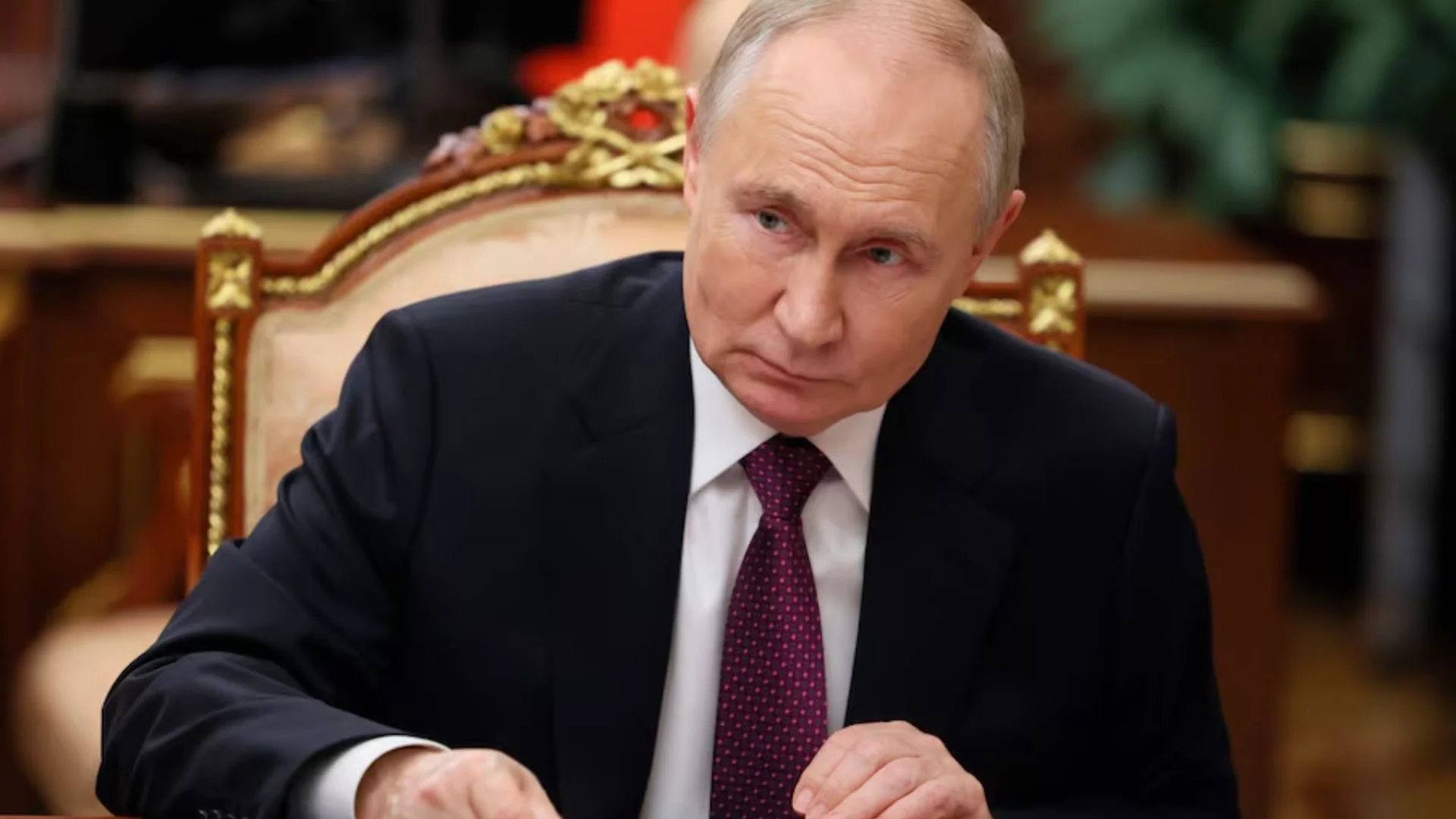A profound transformation in warfare is underway, based on advances in two interconnected critical technologies related to artificial intelligence and machine autonomy. The convergence of these technologies is enabling the concept of ‘Drone Swarms’, made up of cooperative, autonomous robots that react to the battlefield as one — this concept will fundamentally alter the rules and nature of warfare in the 21st century. SWARM is an acronym for ‘Smart War-Fighting Array of Reconfigured Modules’. The basic ‘Drone Swarm Technology’ revolves around the ability of a very large number of drones, generally in the mini/micro category to autonomously make decisions based on shared information, and has the potential to revolutionise the dynamics of conflict. In simple terms it is like a hive of bees geared towards a single larger objective but each bee capable of acting on its own in relation to other bees to meet that objective. Due to the significant number of drones that can form part of any swarm, there is considerable degree of autonomy that the swarm as a whole and individual drones can exercise in finding and engaging targets.
Nonstate actors have already demonstrated the efficacy of swarming attacks on conventional military and economic targets, with off the shelf drones. The first such attack took place on the Russian Air and Naval Bases at Khemmiem and Tartus in West Syria respectively on 5 January 2018 — thirteen GPS guided drones were involved in this attack. While Russia was able to shoot/neutralise all the thirteen drones involved in the attack without any major damage, the crucial aspect of this technology was brought home to the world at large. Analysis revealed that though these were very simple and rudimentary drones made of wood and plastic, they were launched from a range in excess of 50 km, had warheads and were guided precisely to the targets. This use of this concept was further corroborated when on 14 September 2019 approximately ten drones were used to swarm two Saudi ‘Aramco’ oil processing facilities at Abqarq and Khurais with devastating effect — their origin was traced to the Yemen backed Houthi rebels. We are today on the cusp of an era when smart, autonomous robots fly and communicate with each other and work together as a team to accomplish missions. These robot teams could number more than a hundred and hence the swarm effect to overwhelm and defeat the enemy.
Leading military powers like the United States, China, Russia and Britain are already involved in the process of developing this technology and have been carrying out drone swarming trials over the last 3-4 years. The US has been carrying out drone swarming trials since 2015 — in Jan 2017 the US Strategic Capabilities Office and Air Force carried out trials with 103 ‘Perdix Quadcopter Drones’ functioning as a swarm. The US research agency DARPA is also working on a programme called ‘Gremlins’ involving micro drones the size and shape of missiles designed to be dropped from planes. The US Navy meanwhile has an entire research program towards the development of autonomous swarms called, ‘Low Cost Unmanned Aerial Vehicle Swarming Technology’ (LOCUST). Russia is also reportedly working on the concept of drone swarming and is probably trying to integrate drones with its ‘Sixth Generation Fighter Aircraft’. The Chinese have been demonstrating their capability and progress in this area on numerous occasions.
The first display was in December 2017 at the Global Fortune Forum in Guangzhou of a swarm with 1,108 drones. This was followed by a pre-recorded display of 1218 quad-copter drones swarm during the ‘Pyeongchang Winter Olympics’, leaving the spectators astounded. China has also demonstrated drone swarming using 67 larger size fixed wing drones and is seriously looking at swarm capability for attacking US Aircraft Carriers. That UK is also investing in drone swarm technology was evident when their Defence Secretary stated last year in Feb, that Swarm Squadrons will form part of British military in the future. Closer home India has been a late starter and is finally moving in the direction of investing in the development of this critical technology in collaboration with the US, through the Defence Technology and Trade Initiative (DTTI) — this decision was taken during the 2 + 2 dialogue last year. What is however encouraging is that a Bangalore based start-up, ‘New Space Research and Technologies’ along with state run HAL is currently working on the drone swarm technology project, ‘Air Launched Flexible Asset-Swarm’ (ALFA-S). The ALFA-S swarming drones will be 1-2 metres long with folding wings, capable of being packed in canisters and launched from aircraft. As per the company the first swarm drone prototype would be ready in two years’ timeframe. Military Applications Keeping in mind the significant developments taking place in the swarm technology as cited above, there is no doubt that drone swarms are going to be the choice of militaries around the world in the foreseeable future, as they could become the cheapest way to successfully execute many types of missions related to internal and external security threats.
The Perdix system (103 Drones) used in the US Air Force test had an off the shelf price of only a few thousand dollars, as most of these systems are based on existing, easily available and extremely cheap civilian technology. This dramatically changes the cost-benefit analysis that the military forces need to do, as risk management is the cornerstone of all military operations. Another important facet of military application of this technology is that a Swarm is literally unstoppable due to its disaggregated nature and can be multi-tasked to cover both ISR role and attack missions. Swarms of drones could search the oceans for adversary submarines, disperse over large areas to identify and eliminate hostile surface-to-air missiles and other air defences and could also potentially serve as novel missile defences, blocking incoming missiles. On the internal security front, security swarms equipped with chemical, biological, radiological, and nuclear (CBRN) detectors, facial recognition, anti-drone weapons and other capabilities offer defences against a range of threats.
Drone Swarms could be particularly useful in urban warfare and anti-terrorist operations where they could be launched inside built up areas to seek out hidden militants and neutralise them. Strategic drones like the Predator are already being extensively used in this role by the US in Af-Pak region, but they are slow, vulnerable and expensive. Combat search and rescue is another area where drone swarms will be very effective due to their ability to comb through larger areas even in difficult and hostile terrain. On the flip side, Swarms smaller in size could be used in clandestine attack missions against adversaries during peacetime and make it difficult to apportion blame. Case in point is the attack carried out on Russian air and naval bases in Syria, in which its origin, source and the organisation responsible still remains a mystery. In the Indian context drone swarms could have been the ideal weapon systems for carrying out Uri style surgical strikes or targeting the Jaish terror camps in Balakot. But while drone swarms represent a major technological advancement and will be a game changer in future conflicts, unlocking their full potential will require developing capabilities centred around three key areas like swarm size, diversity and hardening.
A large swarm is more capable with greater survivability though the size basically will depend on the type of target and mission profile. A drone swarm need not consist of the same type and size of drones, but could incorporate both large and small drones equipped with different payloads — such diverse swarms will be more capable and provide greater degree of flexibility. Drone swarming creates significant vulnerabilities to electronic warfare and hence protecting against this vulnerability is critical. Drone swarm functioning inherently depends on the ability of the drones to communicate with another and if the drones cannot share information due to jamming, the drone swarm cannot function as a coherent whole. Swarms may incorporate drones equipped with anti-radiation missiles or operating on multiple different frequencies to counter jamming-advances in technology may also harden the swarm against electronic warfare vulnerabilities. Conclusion Drone swarm technology promises significant advantages in the near future. Both the US and China have realised this and are racing ahead by pouring considerable funds into the research of this technology.
Some analysts believe that China’s swarm technology has enormous military potential and that their demonstrated capability in this area has surpassed the US. The potential of drone swarms in offensive roles against a technologically superior adversary is well understood by the Chinese military. This should set the alarm bells ringing in India and it is important that these Chinese advances in swarm technology are not taken lightly. Presently India has only taken some baby steps in this critical technology development process as brought out earlier. Apart from the option of collaboration with the US in this area, India’s military R&D along with the private sector needs to urgently work on the indigenous development of this technology along with counter strategy. No other technology is likely to offer as many tactical advantages to the military like that of the drone swarms in the future and that too at low costs.























